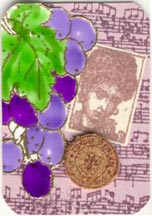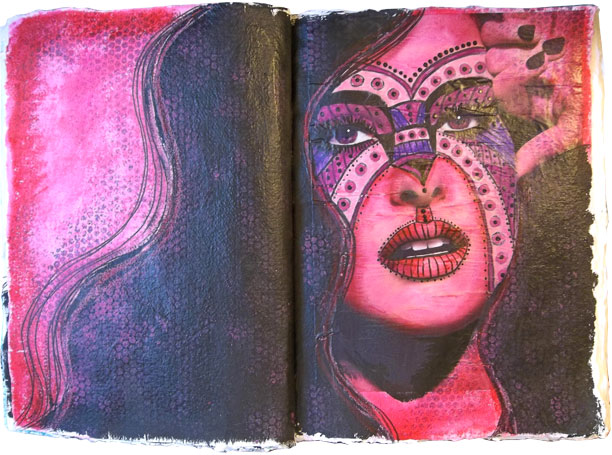
This week, my aimless surfing for interesting ideas led me to art money. I ended up at the Bank of International Art Money, where artists from all over the world have registered as official BIAM artists.
The BIAM Basics
Art money can be made in any media, but like artist trading cards, there is a size restriction—12 x 18 cms, or roughly 4-3/4 x 7 inches. For official BIAM artists, there’s a list of items that must be on each piece of money: the address of the BIAM web site; a serial number that contains the year the bill was created, and its number; the artists, name, nationality and signature. Surfing through the galleries, I found it interesting to see how each artist dealt with these elements and integrated them into their composition.
BIAM also asks that each piece of money show a visible sign of the artist’s physical work. So, for someone who likes to work digitally, there must be some work on the money after the bill is designed and printed.
BIAM money is worth a set amount the year it is created (today, about $25 US), and increases in value each year for 7 years, when it matures, and keeps that value forever. There are all sorts of businesses around the world that will take BIAM art money in exchange for up to 50% of the cost of their goods or services.
Why This Interests Me
The idea that art money has a specific value from the moment it’s created really appeals to me. I’ve been debating the whole ATC vs. ACEO thing this week—about all art being equal vs. art having a market value. I’m coming down on the side of not allowing the market to set a price for all art. I love that artist trading cards are swapped one for one, having equal value no matter what the artist’s skill level or popularity, so the idea that art money is worth $25 immediately, no matter which artist created it, appeals to me.
I’m also in a phase of viewing everyday objects as art. I’ve been wandering around my house (and my neighborhood, much to the dismay of my neighbors), photographing things like cracks in cement and manhole covers. If I can make art from everyday objects, is there art in those objects individually? Art money takes one of our most basic everyday objects and asks us to treat it as art. I like that very much!
Naturally, I had to give designing some art money a try. You can see an example of one of my very un-official pieces above—they’re missing some of the items on the BIAM list, since I’m not a registered member. There are a few more in the galleries. I took a digital approach, thinking of the look of the big, colorful bills I saw when I was in Europe. Surfing through the BIAM galleries, there are as many approaches as there are artists. Some look very much like pieces of money, and some are simply paintings or collages.
So, what would money look like if you could design it?




